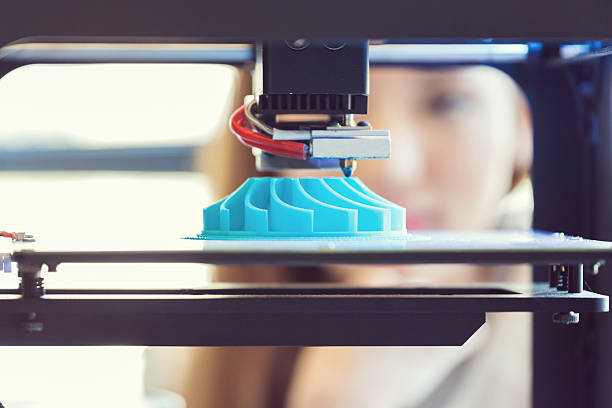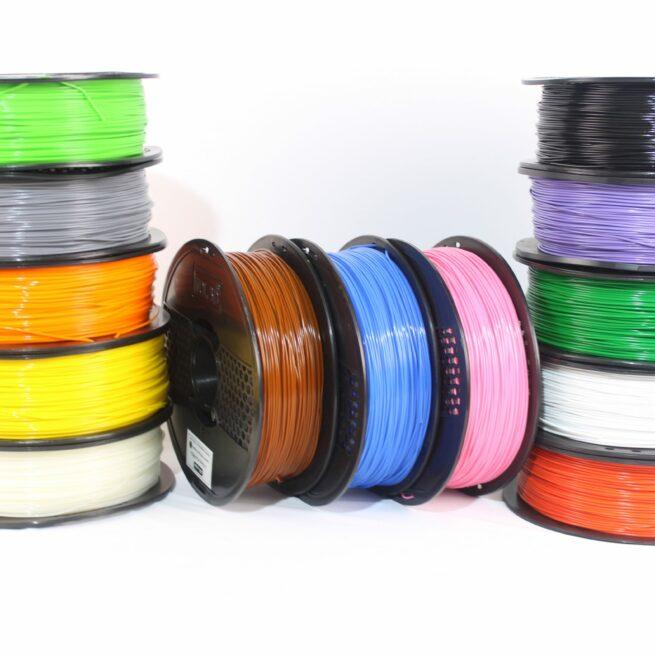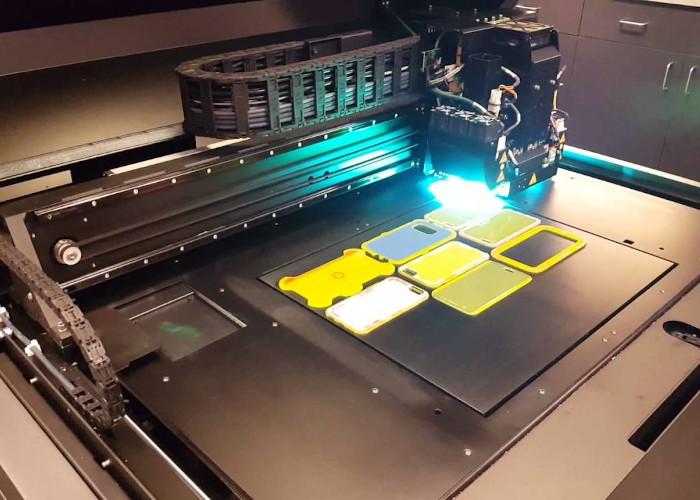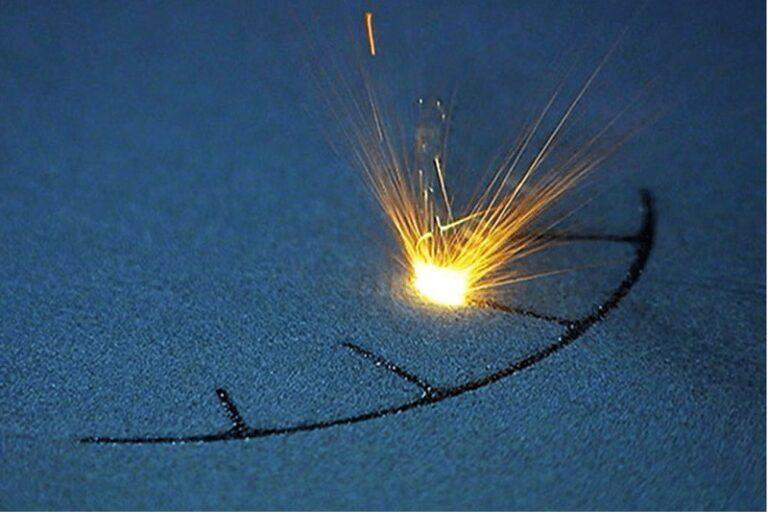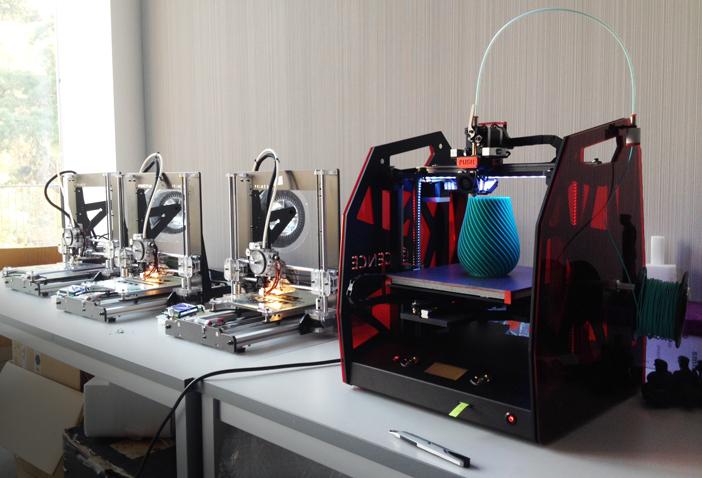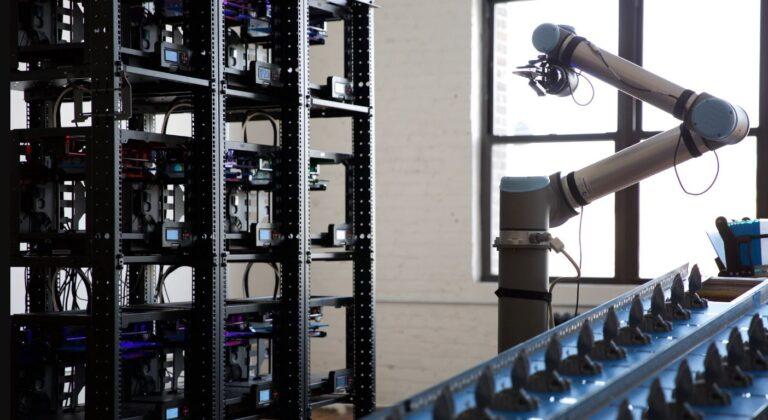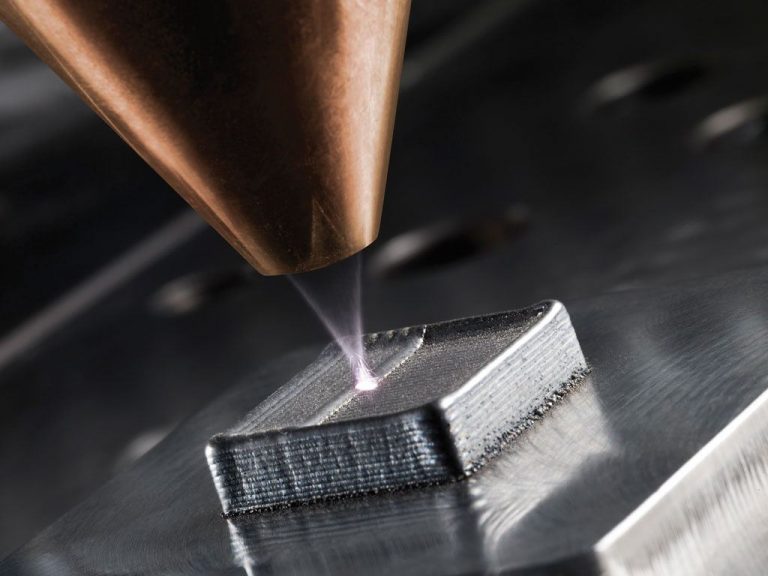I. Introduction
Fused Deposition Modelling (FDM) is a widely used 3D printing technology that has revolutionized the way we design and manufacture products. With FDM, complex 3D objects can be created by depositing layers of melted thermoplastic filament in a precise pattern, according to a digital model. FDM is affordable, versatile, and easy to use, making it an accessible 3D printing option for hobbyists, entrepreneurs, and professionals. Its ability to customize and produce functional prototypes and end-use parts has opened up new possibilities for numerous industries, including engineering, architecture, healthcare, and education. In this blog post, we’ll explore FDM technology’s basics, its benefits and limitations, and its potential future impact.
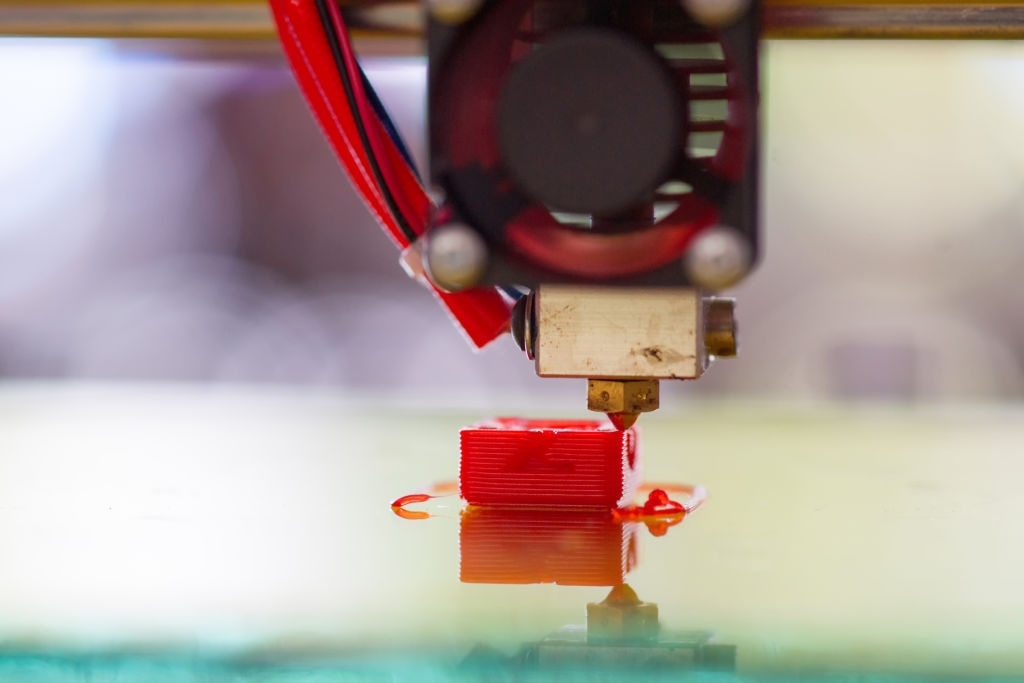
A. Explanation of Fused Deposition Modeling (FDM)
Fused Deposition Modeling (FDM) is a 3D printing technology that builds objects layer by layer by melting and depositing thermoplastic filament material through a heated nozzle. The filament is fed into the nozzle from a spool and melted at a specific temperature. A movable print head attaches the nozzle and follows the path of the object in the digital design. As the print head moves, it deposits the melted filament in a precise pattern, building up each layer until the object is complete. Once the 3D printer deposits a layer, it cools and solidifies, and then it forms a strong bond with the previous layer. The FDM process can use a variety of thermoplastic materials, including PLA, ABS, PETG, Nylon, and TPU, among others, making it a versatile technology for creating functional parts and prototypes.
B. Purpose of the article
The purpose of this article is to provide an introduction to Fused Deposition Modelling (FDM) technology and explain how it works. We will explore the FDM process in detail, covering everything from filament loading to print completion. In addition, we will examine the benefits and limitations of FDM, as well as its various applications across different industries. Finally, we will discuss the potential future impact of FDM technology and the advancements that could shape its development in the years to come. This article will provide valuable insights into the basics of FDM and how it can be used to create functional prototypes and end-use parts, whether you’re a hobbyist or a professional in the field of manufacturing.
C. Brief history of FDM
S. Scott Crump was the pioneer of Fused Deposition Modeling (FDM) in the late 1980s. FDM is a 3D printing method that revolutionized modern manufacturing. To develop this technology, Crump established Stratasys, a company that remains a pioneer in 3D printing technology to this day. Stratasys obtained the initial FDM patent in 1989 and sold FDM machines for industrial usage by the mid-1990s. Over the years, FDM technology has evolved significantly. Through the introduction of new materials, hardware, and software, FDM has expanded its capabilities and become more accessible to a broader audience. Today, various sectors utilize FDM, a widespread 3D printing method, to produce functioning prototypes, end-use components, and even consumer goods. As a pioneer of 3D printing technology, FDM has played a crucial influence in defining the future of the modern industry.
II. How Fused Deposition Modeling Works
Fused Deposition Modeling (FDM) is a 3D printing technology that works by melting and extruding a thermoplastic filament, layer by layer, to create a 3D object. Specialized software slices the digital 3D model into layers, which starts the process. The printer then heats the filament until it reaches its melting point and extrudes it through a nozzle, depositing it layer by layer onto the build platform. As the filament cools and solidifies, it fuses to the previous layer, creating a solid object. The printer continues this process, building up the layers until the entire object is complete.
FDM printers can print with a variety of materials, including PLA, ABS, nylon, and PETG, among others. FDM’s versatility makes it a popular 3D printing technology for a wide range of applications, from rapid prototyping to creating end-use parts. This is because it can use different materials and print at different speeds and resolutions.
A. Explanation of the FDM process
Fused Deposition Modelling (FDM) is a popular 3D printing technology that builds objects layer by layer using thermoplastic materials. Specialized software slices the digital 3D model into thin layers, which begins the FDM process. Next, the slicing software generates a toolpath that directs the printer head to extrude the filament at the correct locations to create the 3D object.
An FDM printer utilizes a filament spool, which feeds the filament through a heated nozzle. Once the nozzle heats up the filament to a specific temperature (which varies with the material being used), it melts. Then, it extrudes the melted filament onto the build platform layer by layer by moving the printer head in a precise pattern. As each layer is extruded, it fuses with the previous layer, creating a solid object. The printer bed moves up and down to create additional layers, depending on the height of the object. Once the printing is complete, the object cools and hardens and is then removed from the printer bed.
FDM printers are versatile and can print with various materials, including ABS, PLA, PETG, Nylon, and TPU, each having unique properties like strength, flexibility, and durability, making them suitable for different applications. The flexibility of the FDM process allows the user to adjust the print settings such as print speed, temperature, and layer height, making FDM technology suitable for producing a wide range of objects, from functional prototypes to end-use parts.
B. Overview of FDM hardware
Printer Design
FDM printers come in various designs, such as desktop, industrial, and multi-material. Hobbyists and small businesses commonly use desktop printers, whereas larger-scale applications utilize industrial printers. Multi-material printers can print objects using different materials, which is useful for creating objects with varying properties.
Extruder
The extruder is a critical component in FDM printers, as it melts and extrudes the filament. It has two parts: the hot end and the cold end. The hot end heats and melts the filament, while the cold end feeds the filament into the hot end.
Print Bed
Heat the print bed to prevent warping and help the object stick to the surface. The object is built on the print bed Print beds come in different sizes and materials, such as glass, metal, or adhesive sheets.
When picking an FDM printer, it’s important to think about the features and capabilities of the hardware, as they can affect the quality, durability, and production time of the object.
C. Detailed description of FDM steps
People widely use Fused Deposition Modeling (FDM), which can create complex objects with varying properties, as a 3D printing technology. The FDM process involves several steps that are essential for successful printing. In this section, we will provide a detailed description of the FDM steps, including Filament loading, Printing bed preparation, Heating the nozzle, Extrusion of filament, Layering, and cooling, and Print completion. By understanding the FDM process, you can create high-quality prints that meet your specific needs and requirements. So, let’s dive into the world of FDM and explore each step in detail.
1. Filament loading
Filament loading is the first step in the Fused Deposition Modeling (FDM) process. Loading the thermoplastic material (filament) into the extruder, which melts and deposits the material layer-by-layer to create the object. To load the filament, you need to feed it through the extruder’s cold end and into the hot end, where it will be heated to its melting point. The filament should be loaded correctly to ensure the extruder can feed it through the hot end and prevent jamming. Some FDM printers have automatic filament loading, which makes the process easier, while others require manual loading. Proper filament loading is crucial for the success of the printing process, as it can affect the object’s quality, strength, and appearance.
2. Printing bed preparation
Printing bed preparation is a critical step in the Fused Deposition Modeling (FDM) process. The printing bed is where the object will be built, and it needs to be prepared correctly to ensure the object adheres to the bed and doesn’t warp or detach during printing. There are different methods for preparing the printing bed, depending on the material and the printer. For example, some printers come with a built-in heating element that can heat the bed to the appropriate temperature, while others require manual heating. Additionally, the surface of the bed can be treated with adhesives, tapes, or other materials to improve adhesion. It’s essential to ensure that the bed is level and clean before printing, as any unevenness or debris can affect the print’s quality. Proper printing bed preparation is crucial for successful printing, as it can prevent issues such as warping, detachment, or distortion of the object.
3. Heating the nozzle
Heating the nozzle is a crucial step in the Fused Deposition Modeling (FDM) process, as it’s where the filament is melted and deposited. The nozzle is typically made of brass or stainless steel and is heated to a temperature that is specific to the material being used. The temperature range for FDM printing can vary from 180 to 300 degrees Celsius, depending on the material. The nozzle is heated using a heating element, which is often located in the extruder assembly.
The heating element is controlled by the printer’s software, which ensures that the temperature remains constant throughout the printing process. The nozzle’s temperature is essential for successful printing, as it affects the filament’s melting and flow rate. If the temperature is too low, the filament won’t melt correctly, while if it’s too high, the filament can burn or cause other issues. Proper nozzle heating is crucial for high-quality, successful FDM printing.
4. Extrusion of filament
The Fused Deposition Modeling (FDM) procedure continues with the extrusion of the filament after heating the nozzle. The filament is melted in the heated nozzle during the extrusion process, and it is then deposited onto the printing bed in a precise pattern predetermined by the printer’s software. A motor-driven gear that is guided by the printer’s software forces the molten filament out of the nozzle. The software, which considers the design of the item and the printing conditions, decides how much filament will be extruded. To guarantee the object’s correctness and quality, the extrusion process must be accurate and reliable. The look and strength of the product may be impacted by gaps, over-extrusion, or other problems if the filament is not extruded properly. FDM printing success and high quality depend on good filament extrusion.
5. Layering and cooling
After the filament is extruded, the next step in the Fused Deposition Modeling (FDM) process is layering and cooling. The extruded filament is laid down in a specific pattern that corresponds to the object’s design, creating one layer at a time. The printer’s software controls the layering process and ensures that each layer is positioned precisely on top of the previous one. The cooling process is also critical in this step, as it helps the filament solidify and maintain its shape. Cooling can occur naturally, or a fan can be used to speed up the process.
The cooling process needs to be carefully controlled to prevent warping, where the object’s edges lift or curl during printing, leading to a distorted final product. The layering and cooling process is repeated layer by layer until the object is fully printed, and a result is a three-dimensional object that can be removed from the printing bed. Proper layering and cooling are essential for high-quality, successful FDM printing.
6. Print completion
Print completion is the last step in the Fused Deposition Modeling (FDM) procedure. The printer’s software sends a signal indicating that the print job is complete after all the layers have been applied and the object has been entirely produced. Before it can be taken from the printer’s bed, the object must cool since the heat may have left it still flexible and squishy.
Any support material that was utilized to aid in the creation of overhangs or intricate features can be removed once the object has been removed from the bed and allowed to cool. To get the required quality, the printed object could require some post-processing, such as sanding or painting. Depending on the complexity, size, and printing settings of the item, a print job’s completion time might change. The FDM procedure comes to a close with the print completion, producing a real, three-dimensional item.
III. Benefits of Fused Deposition Modeling
Popular 3D printing technology called Fused Deposition Modeling (FDM) has several benefits over other production processes. This section will cover how FDM technology has changed the manufacturing sector and its advantages. FDM has emerged as a standard technology across several sectors thanks to its affordability and capacity to produce intricate geometries. Additionally, FDM is a desirable solution for prototype and production due to its adaptability and accessibility. In this part, we’ll discuss the advantages of FDM. It may support people and companies in producing goods that are of high quality, affordable, and customizable to their needs.
A. Versatility
The versatility of fused deposition modeling (FDM) is one of its main advantages. From little, detailed bits to massive, complicated structures, FDM technology may be utilized to build a wide range of things. This makes FDM appropriate for a variety of sectors, including consumer products, healthcare, and aerospace. FDM can also work with a broad range of materials, including food items, composites, and thermoplastics. FDM is able to create things with various mechanical qualities. This is done by changing printing settings like layer height, infill density, and printing speed. Due to its adaptability, FDM can handle a variety of applications and satisfy a range of industrial requirements.
B. Affordability
Affordability is another major advantage of Fused Deposition Modeling (FDM). Compared to other manufacturing technologies, FDM is relatively inexpensive. This is because FDM printers are much cheaper to purchase and maintain than other industrial machines. Additionally, FDM uses materials that are less expensive than those used in other manufacturing methods, such as injection molding. FDM’s low cost makes it an attractive option. It is popular among small businesses, hobbyists, and individuals who want to produce high-quality products without breaking the bank. Furthermore, FDM enables efficient utilization of materials by printing only what is necessary, which reduces waste and lowers production expenses. The affordability of FDM has democratized manufacturing and made it possible for anyone to create professional-grade products.
C. Ease of use
Ease of use is a significant benefit of Fused Deposition Modeling (FDM). FDM printers are designed to be user-friendly and easy to operate. They can even be used by those who are not familiar with 3D printing technology. Setting up an FDM printer is relatively simple. The software used for FDM printing is typically user-friendly and intuitive. Moreover, FDM printing technology is highly automated, and the printer takes care of most of the work. The user needs to load the filament. They also need to set the printing parameters and start the printing process. FDM technology’s ease of use has made 3D printing accessible to a wider audience. It has removed many of the barriers to entry that previously existed. People with no technical background can easily produce high-quality prints. This has led to the democratization of manufacturing and accelerated innovation.
D. Customization
Customization is another major benefit of Fused Deposition Modeling (FDM). Highly customized parts and products can be created with FDM printing. These would be difficult or impossible to produce with traditional manufacturing methods. FDM technology enables the creation of intricate and complex designs, including parts with internal cavities, undercuts, and intricate geometries. The layer-by-layer nature of the FDM process enables the creation of complex geometries with ease. This ability to produce highly customized parts is due to this. Additionally, FDM allows for the use of a wide range of materials, including thermoplastics, composites, and even metals. The ability to print with a wide range of materials further increases the customization possibilities of FDM printing. The aerospace, medical, and automotive industries require highly customized parts. That’s why FDM technology is a popular choice due to its customization options.
IV. Limitations of Fused Deposition Modeling
While Fused Deposition Modeling (FDM) is an increasingly popular 3D printing technology, like any technology, it has limitations. It is crucial to understand the limitations of FDM. This helps in determining if it is appropriate for a particular project or application. In this section, we will discuss the main limitations of FDM technology. By understanding these limitations, individuals can make informed decisions when considering FDM printing for their project or application.
A. Quality limitations
The quality limitations of fused deposition modeling (FDM) are one of its main drawbacks. FDM’s accuracy and resolution improved but falls short of SLA and DLP. SLA and DLP offer better accuracy than FDM technology. FDM items frequently have obvious layer lines and surface flaws, which might reduce their final product’s quality. Conventional manufacturing techniques often produce stronger and more durable parts. FDM parts can improve strength and durability by adjusting printing settings and using stronger materials.
Despite these drawbacks, FDM is still a widely used 3D printing method because of its adaptability, low cost, and simplicity.
B. Material limitations
The material limitations of the Fused Deposition Modeling (FDM) technique are another important drawback. The sorts of parts that may be manufactured may be constrained by the restricted variety of materials that FDM printers typically support. ABS and PLA are often the only FDM materials due to lower melting temperatures. Some printers handle advanced materials but require costly and specialized tools. FDM components may not be viable for applications requiring high-temperature or chemical resistance. FDM technology is still a popular choice for creating prototypes and finished parts.
C. Speed limitations
Speed limitations are another important factor to consider when using Fused Deposition Modeling (FDM) technology. While FDM can produce complex parts in a matter of hours, other additive manufacturing techniques can produce parts at a faster rate than the speed at which FDM produces them. FDM machines build parts layer by layer, and each layer requires time to cool and solidify before the next layer can be added. This is because the machine needs to cool and solidify each layer before adding the next one. Additionally, to ensure accurate and error-free material deposition, FDM machines require slower printing speeds.
This can result in longer printing times and can be a significant limitation for industries that require fast production times. However, advances in FDM technology have helped to reduce these limitations, and newer printers can produce parts faster than ever before. As with any manufacturing process, it’s important to consider the trade-offs between speed and quality when using FDM technology.
V. Applications of Fused Deposition Modeling
A variety of sectors can employ the adaptable and affordable 3D printing technique known as fused deposition modeling (FDM). FDM technology has gained popularity for a wide range of applications thanks to its capacity to create complicated geometries, working prototypes, and end-use parts. We’ll look at some of the most widespread and creative applications of FDM technology in this part, ranging from consumer products and healthcare to aerospace and automobiles. There is no doubting the influence that FDM technology is having on the future of manufacturing, whether your interest is in fast prototyping or large-scale manufacturing.
A. Engineering
Fused Deposition Modeling (FDM) technology has a wide range of applications in engineering, particularly in product design and development. With the ability to produce functional prototypes and end-use parts quickly and cost-effectively, FDM has become a popular choice for engineers looking to reduce the time and cost associated with traditional prototyping methods. FDM technology is particularly useful for creating complex geometries, which can be challenging to achieve with other manufacturing methods. The ability to print parts in a wide range of materials, including high-performance engineering thermoplastics, makes FDM an attractive option for applications that require durability, strength, and resistance to high temperatures or corrosive environments. The aerospace, automotive, and industrial manufacturing industries frequently use FDM technology, where engineering accuracy holds great significance.
B. Architecture
Architects widely use Fused Deposition Modeling (FDM) in the field of architecture, allowing them to quickly and easily create detailed 3D models of their designs. This technology provides the ability to rapidly prototype architectural designs and iterate on them, allowing for more efficient communication and decision-making during the design process. Furthermore, individuals can use FDM technology to create detailed scale models of buildings and urban landscapes that they can use for presentations and marketing purposes. FDM is an important part of the architectural design process because it can make high-quality, detailed models quickly and cheaply.
C. Healthcare
Fused Deposition Modeling has made significant advancements in healthcare applications. People have utilized it to create complex anatomical models, surgical implants, and even functional prosthetics for patients. For example, engineers have used it to create customized prosthetic limbs for amputees that perfectly match their unique limb shape and size. Additionally, surgeons have used FDM to print models of organs for pre-surgical planning and practice, which provides them with a detailed visualization of the patient’s internal anatomy. With the continued development of new materials and techniques, FDM is becoming an increasingly important tool for medical professionals and patients alike.
D. Education
Fused Deposition Modeling (FDM) has found numerous applications in the education sector. FDM printers have become increasingly affordable and user-friendly, making them accessible to schools and universities. This technology has proven to be a valuable educational tool in subjects such as science, technology, engineering, and mathematics (STEM). With FDM printers, students can develop and produce their designs, allowing them to learn through hands-on experience. Additionally, medical schools have also utilized FDM printing for educational purposes to create detailed anatomical models for surgical training. Furthermore, individuals have also used FDM technology to print complex and accurate 3D models of various scientific concepts that are difficult to visualize in traditional two-dimensional drawings.
E. Consumer goods
Fused Deposition Modeling has had a significant impact on the production of consumer goods. FDM has transformed how people make parts, and its capacity to produce intricate forms and patterns means that the possibilities are unlimited. Manufacturers can now create intricate designs and shapes for products such as phone cases, toys, and household items, which were once impossible to produce. In addition, FDM has also made it possible for designers and artists to produce unique and customized products for their customers. With FDM, consumers can now have access to a wide range of products that are both high-quality and affordable. As technology continues to evolve, it is likely that FDM will continue to shape the consumer goods industry for years to come.
VI. Future of Fused Deposition Modeling
It is obvious that Fused Deposition Modeling (FDM) has a promising future as the technology continues to gain popularity and its applications spread to other industries. FDM has had substantial improvements in technology, software, materials, and overall capabilities since its inception in the late 1980s. These developments have made 3D printing more affordable, available, and efficient. We shall examine probable future developments and FDM’s potential uses in a variety of sectors in this section.
A. Advancements in hardware
Since its debut in the late 1980s, Fused Deposition Modeling (FDM) has gone a long way, and the future of this 3D printing technique is promising. FDM printers are growing more advanced and capable of generating larger, more complicated, and higher-quality prints as hardware advances. Manufacturers are creating new machines that are quicker, more dependable, and more cost-effective, making 3D printing technology accessible to a broader variety of sectors and consumers. In addition to pushing the manufacture of new materials, the development of new FDM printers is expanding the variety of possible uses for this technology. Due to the rapid improvement of hardware, FDM printing will continue to be a dominant force in the manufacturing business for many years to come.
B. New materials and possibilities
As manufacturers have progressed with FDM technology, they have introduced new materials to increase the versatility of the process. The first materials used were PLA and ABS plastics, but now there are numerous materials available, such as nylon, polycarbonate, PEEK, and more. With these new materials, the possibilities of FDM have increased tremendously. For example, creating flexible parts, medical implants, and even conductive parts is now possible with FDM technology. Additionally, researchers continue to expand the range of materials that FDM printing can use. This expanding range of materials is leading to exciting new possibilities for the use of FDM in various industries.
C. Industry and societal impact
Fused Deposition Modeling (FDM) has played a significant role in shaping the future of contemporary industry and society as a pioneer of 3D printing technology. The flexibility and accessibility of FDM technology have brought about positive changes in manufacturing, healthcare, education, and consumer goods. As FDM technology continues to advance, it has the potential to revolutionize production methods, allowing companies to bring products to market more efficiently and cost-effectively. In addition, advancements in FDM technology have the potential to improve patient outcomes and reduce medical costs in the healthcare industry. People think that FDM technology will continue to have a big effect on society in the years to come, opening up new opportunities for innovation and growth in many different industries.
VII. Conclusion
In conclusion, Fused Deposition Modeling (FDM) has changed the manufacturing and design industries by providing a 3D printing technique that is both accessible and inexpensive. We can find applications for this technology in a variety of fields, including engineering, architecture, healthcare, and education. FDM has continued to witness improvements in technology, materials, and software despite its drawbacks. As a result, the future of FDM is bright, with more innovation anticipated to revolutionize the sector and society at large.
A. Recap of FDM technology
Fused Deposition Modeling (FDM) is a 3D printing technology that was first developed in the late 1980s. It works by heating and extruding thermoplastic filament to create objects layer by layer. FDM technology has become more accessible and versatile over the years through advancements in hardware, software, and materials. It offers numerous benefits, including affordability, ease of use, and customization. However, it also has limitations, such as quality and speed limitations. Despite these limitations, FDM technology has numerous applications in various industries, including healthcare, architecture, engineering, education, and consumer goods. We expect that technology will have a significant impact on industries and society as a whole as it continues to evolve.
B. Final thoughts on FDM and 3D printing technology
In conclusion, Fused Deposition Modeling (FDM) has revolutionized the manufacturing and design industries by making 3D printing technology more accessible and affordable. FDM offers a versatile and customizable option for prototyping and creating end-use products. Although FDM has some limitations, its advantages far outweigh its drawbacks. As 3D printing technology continues to evolve, we can expect to see even more advancements in hardware, materials, and software that will further improve the capabilities of FDM and other 3D printing methods. FDM has already made a significant impact on the industry and society, and its future potential is vast. With the ability to create complex designs and geometries that would be impossible to produce using traditional methods, FDM technology is changing the face of manufacturing and design.
FAQ
FDM technology can work with a variety of materials, such as thermoplastics, composites, and metals. Some common materials include ABS, PLA, nylon, polycarbonate, and PETG.
Yes, FDM printers can create functional parts that are strong enough to be used in real-life applications. These parts can be used in a variety of industries, such as aerospace, automotive, healthcare, and more.
The print time for an object depends on its size, complexity, and the chosen print settings. Generally, it can take anywhere from a few minutes to several hours to print an object.
how we can use Fused Deposition Modeling (FDM) technology to print a 3D object
- Select the appropriate FDM printer
The first step is to select the appropriate FDM printer. Consider factors like the size of the print bed, the quality of the print, the speed of printing, and the price.
- Prepare the 3D design
Once you have the right FDM printer, prepare the 3D design of the object you want to print using 3D modeling software like Tinkercad or Fusion 360.
- Choose the right filament
Select the appropriate filament for the 3D object you want to print. The type of filament depends on the requirements of the print job, such as strength, flexibility, and durability.
- Load the filament
Load the filament into the printer’s extruder. Make sure the filament is loaded correctly and securely to prevent any printing errors.
- Prepare the printing bed
Prepare the printing bed by cleaning it thoroughly and leveling it to ensure that the print adheres to it properly.
- Set the printing parameters
Set the printing parameters, like printing speed, layer height, and temperature, based on the object you want to print and the filament you are using.
- Start the printing
Start the printing process and wait for the object to be printed. Make sure to monitor the print progress periodically to ensure that the printer is working correctly.
- Finish the print
Once the printing is complete, remove the printed object from the print bed and clean up any excess filament that may be attached to it.

